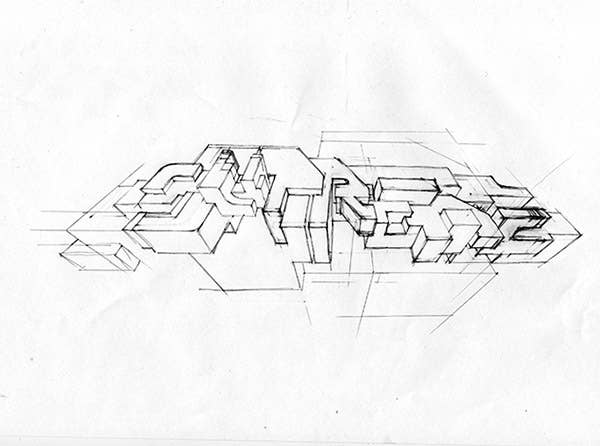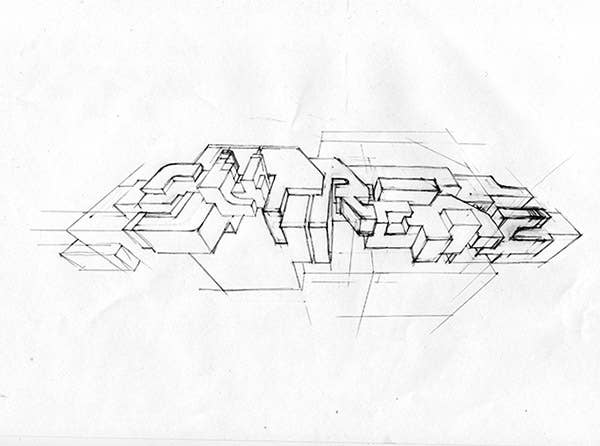
Boris Tellegen, a 51-year-old Dutch graffiti pioneer better known as Delta, says he was aware of Supreme when they reached out several months ago to work on their Fall/Winter 2019 collection. However, he wasn’t fully aware of how popular the brand was until he told his son that Supreme just called him.
“‘Oh Dad! Dad! Are you serious! You’re kidding!’" Tellegen exclaims over the phone when recalling his son’s reaction. “I knew Supreme was big, but I had no idea how collectible certain brands could be. I’m not saying that my stuff will be highly collectible. But I mean, the brand Supreme in general, they have items that are highly sought after.”
Over the years, Supreme has collaborated with a number of legendary graffiti artists. Everyone from deified subway graffiti pioneers like Dondi to hardcore street bombers like JA One. The standout pieces from the brand’s latest collection includes Delta’s iteration of the Supreme logo on varsity jackets, hoodies, beanies, skateboard decks, and key chains. Typically, the brand keeps graffiti collaborations within the Big Apple. But the partnership with Delta marks the first time the brand has acknowledged the European graffiti scene.
Tellegen began writing graffiti as Delta in 1983 when he was 14 years old. After taking a hiatus from graffiti between 1988-1991 to study industrial product design at the Delft University of Technology, Delta returned to the game emboldened with a radical way to approach graffiti that remains a trademark of his work today. Instead of traditionally adding one layer of 3D to a set of letters, Delta painted letters as if they were objects with a top and bottom that one could actually hold. His unique style of 3D lettering further solidified his place as one of the pioneers of European graffiti. Today, Tellegen is an accomplished contemporary artist who has been able to apply his background in graffiti and industrial product design into other fine art mediums such as collage, sculpture, and even architecture.
Shortly after he painted a gigantic mural inside an abandoned quarry in the countryside of France with fellow graffiti legends, Futura and Mode 2, we called Tellegen to speak about his Supreme collaboration, graffiti, and his work within streetwear over the years.

You're the first European graffiti artist to get a Supreme collaboration. Could you detail how this happened?
I don't know how far I should go in detail. But I was approached by an ex-graffiti writer who works for Supreme. They had a specific idea of what they wanted from me and it was an adaption of an older design that I did. The way they often work is that they have an older design in mind and they just ask the artist to rework it. For example, when they collaborated with Lee Quinones, they asked him to rework that famous handball mural into a Supreme logo for skate decks.

So they had this logo I did in 2000. It was for the Houston Gallery, a gallery in Seattle where I had my first show in the United States. In 2001, that gallery also held an exhibition in Harajuku and I designed a logo specifically for that show. They asked me to rework that logo into the Supreme logo, which I did. I like it, but it is an adaption of an older piece of work.

Were you surprised that this brand knew about your history or work?
Yes, I guess I was. Although this guy that contacted me, I met him years ago. But I was still very humbled and I’m really honored that that they asked me to do that.
So what was that collaborative process like? Did they let you control most of the collaboration? Did they ask you to tweak it a little bit here and there? Or was it just like, "Okay, this is the idea, just do it.”
Well, no. I did rework it a couple of times. Like I said, they were really looking for an adaption of the older design. So I sort of worked it towards that. I submitted 20 different variations so they could play with it and see which would work best on whatever type of garments they would like to use it on.
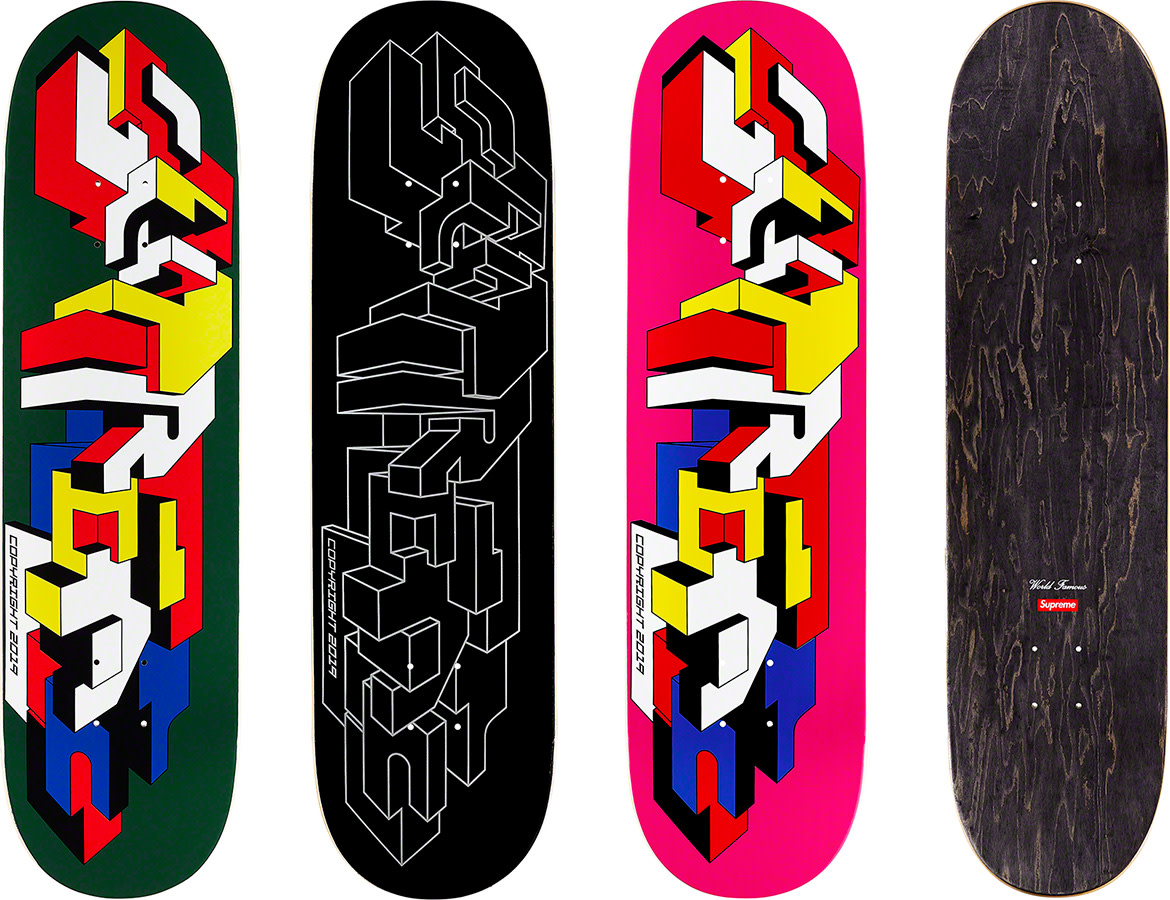
Did you know what garments or accessories it was going to appear on before?
No, they just asked me to do something for a T-shirt and then they asked if they could put it on other products and I was fine with that.
Before the Supreme collaboration, I saw that you did work with brands like Nike, Stussy, and Lafayette. What did you enjoy about working on those collabs?
I'm still a product designer. So if I can work on something that can be used it's a bonus for me. Whether it be furniture or clothing, I kind of like to not be the primary but the secondary function of an item. For example, the primary function of a record sleeve is about music. The art for the sleeve is secondary.
I recently saw your work at the Art on the Roc street art festival in France. It’s almost been two decades since you, Futura and Mode 2 came together to paint Club MORe in Modena, Italy as “DeFuMo.” I noticed you released some tees to coincide with that project. Was that the first time you put your art on clothing or streetwear?
I'd been doing T-shirts already long before that. They were sold locally in some retail spots in Berlin or Paris on a very small scale. I don't think there were any streetwear shops then. They were more like skate shops. Stores like Vibes in Amsterdam and Sole Box in Berlin.
It was cool to see yourself, Futura and Mode2 reunite as DeFuMo at Art On The Roc. How long have you personally known Futura? I was looking at his CV the other day and I noticed he had one of his first shows outside of the United States in Amsterdam at the Yaki Korinblit Gallery?
That's where I met Futura for the first time. I think I was about 15 years old. But back then, I was just a fanboy. Through Yaki’s gallery I started to become aware of graffiti outside of Amsterdam. There was already a graffiti scene in Amsterdam, but it was not piece based. It was just tags and it was influenced by the punk movement and Ska. They had a different style of tagging and were drawing little logos or letters that looked like runes.
So at one point a friend told me about this gallery that was exhibiting stuff from New York. I was like, "New York, why New York?" I went there and it was a show featuring photos from Henry Chalfant. So it was a really good start to see graffiti from New York. And this was before movies like Style Wars or Wild Style.
That opened up a completely new world for me. For starters, I learned that you could use spray paint to fill surfaces and not just to draw lines or to write your name with it. After seeing that show with Henry Chalfant, I think the next one was with either Futura or Seen. I remember meeting Seen, Zephyr, Futura, Blade, all these big New York City guys at that gallery. I’m very thankful that I was able to be there.
When those shows happened, how did it really just change the whole environment around your city?
Well you gotta remember only a handful of writers went to Yaki’s gallery. Writers like myself, Shoe, Joker, Jesus, and Gasp. So we started to do pieces and before that nobody was doing any pieces. This was a contagious thing so that did change the scene in Amsterdam. It started to become focused on a New York style basically. Later on, we met people from Paris, like Bando, and Europe slowly started to grow up and get it's own style.
Who were the writers that you looked up to and were inspired by at the very beginning?
Well I have to give huge credit to Zephyr because he did the most amazing piece here in Amsterdam. I remember I was looking at this wall filled with some tags and then I turned around and suddenly I saw this big silver, purple and blue Zephyr, completely flashing off a brick wall. This was the most amazing thing I've ever seen up at that point. Futura has been a big influence for me back in those days as well. And Dondi, who I also met through Yaki’s gallery at that time. There are too many to mention.
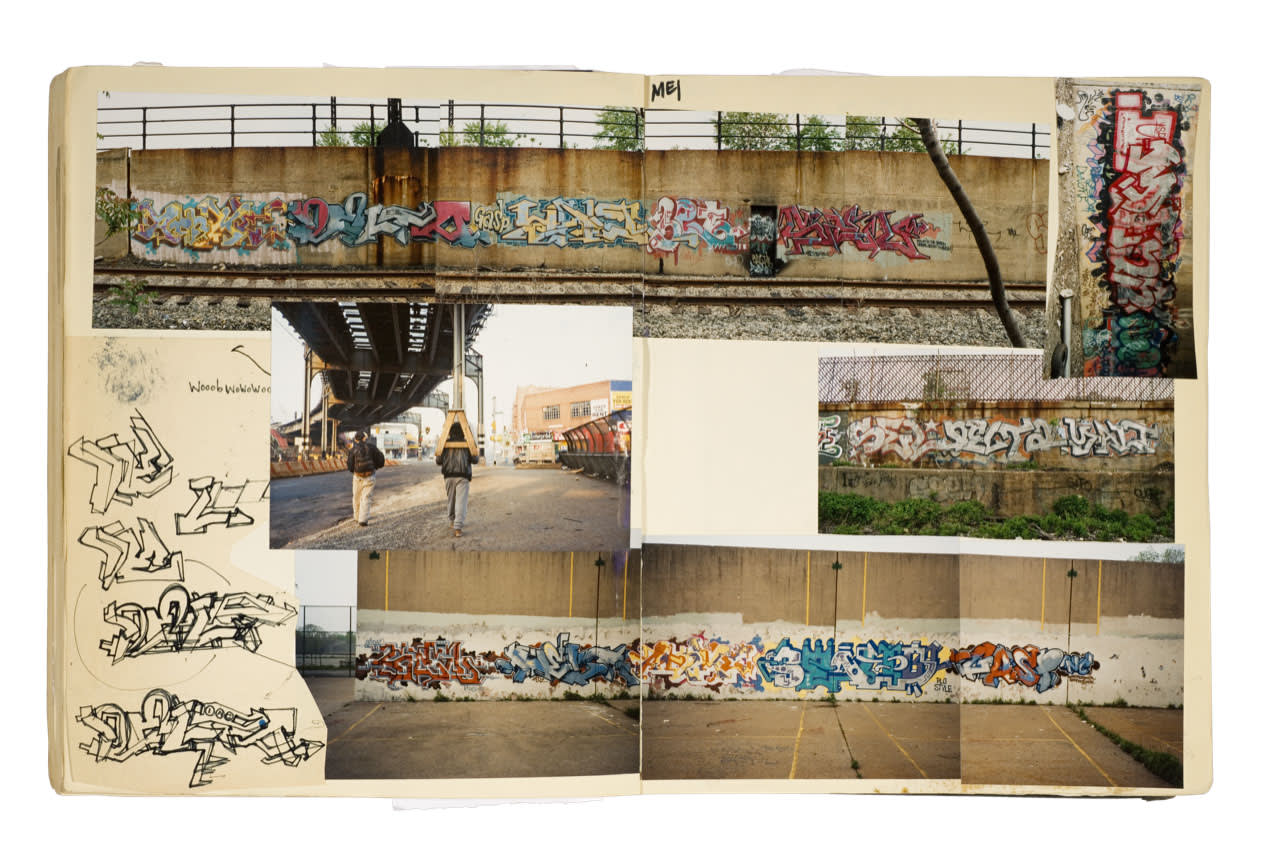
How did studying industrial design engineering at the Delft University of Technology inform your unique style of lettering that is a trademark of your work today?
Well I studied product design, so it means drawing 3D products. We weren’t using 3D software at the time. So I was sketching up products like telephone answering machines, cutlery and any other products you can think of that somebody can use. At one point I thought, that I can do that with letters and approach a letter as a product as well. Something that you could just hold in your hands which has a side, a top, a bottom, and maybe even a back. That took me a fair amount of time to develop and research. It was not so much about the 3D effect. It was more about approaching and designing a letter as a 3D object. What I studied at university definitely influenced my work because I would have never tried that.
It's so interesting to hear that because those seem like such different mediums, graffiti and product design.
If you really think about it, it’s just a one to one thing. 3D product design and lettering. We’ll make it in 2D or we’ll make it in 3D.

So the first opportunities you got with your art, at a more commercial level, was by drawing album art for an EDM label and artists like DJ Vadim? How did this happen?
There was this guy called DJ Food who was with the label Ninja Tunes in London. He just happened to be in that store in Amsterdam called Vibes where I had a canvas up. He thought it was impressive and he just asked me if he could buy it. He bought it and then he met up at my studio and told me that he was also a graphic designer. He said, "Well I'm doing this record for DJ Vadim and maybe you can do the artwork." I was already doing sleeves a little bit for a friend of mine, but that was more for techno music. I was just starting to paint canvases at that time and I was just testing what that medium was without any intentions to really show them.

Your work has really transcended into a lot of different mediums. I see you've also incorporated into public sculpture and architecture as well.
I realized that my talent is not the way that I draw. I honestly feel like my talent is fairly limited, so I have to expand with the medium. I got to play it smart to get the most out of it.
So now that you have that collaboration under your belt, you have joined other graffiti writers who’ve collaborated with the brand like Dondi, Blade, and JA One. Do you care if customers understand your work when buying it or wear it without knowing who you are?
Oh no, that's completely cool. Let me put it this way, I'd rather be Sun Ra then Madonna. I would rather be a graffiti writer or an artist who is appreciated by fellow artists rather than the general public.
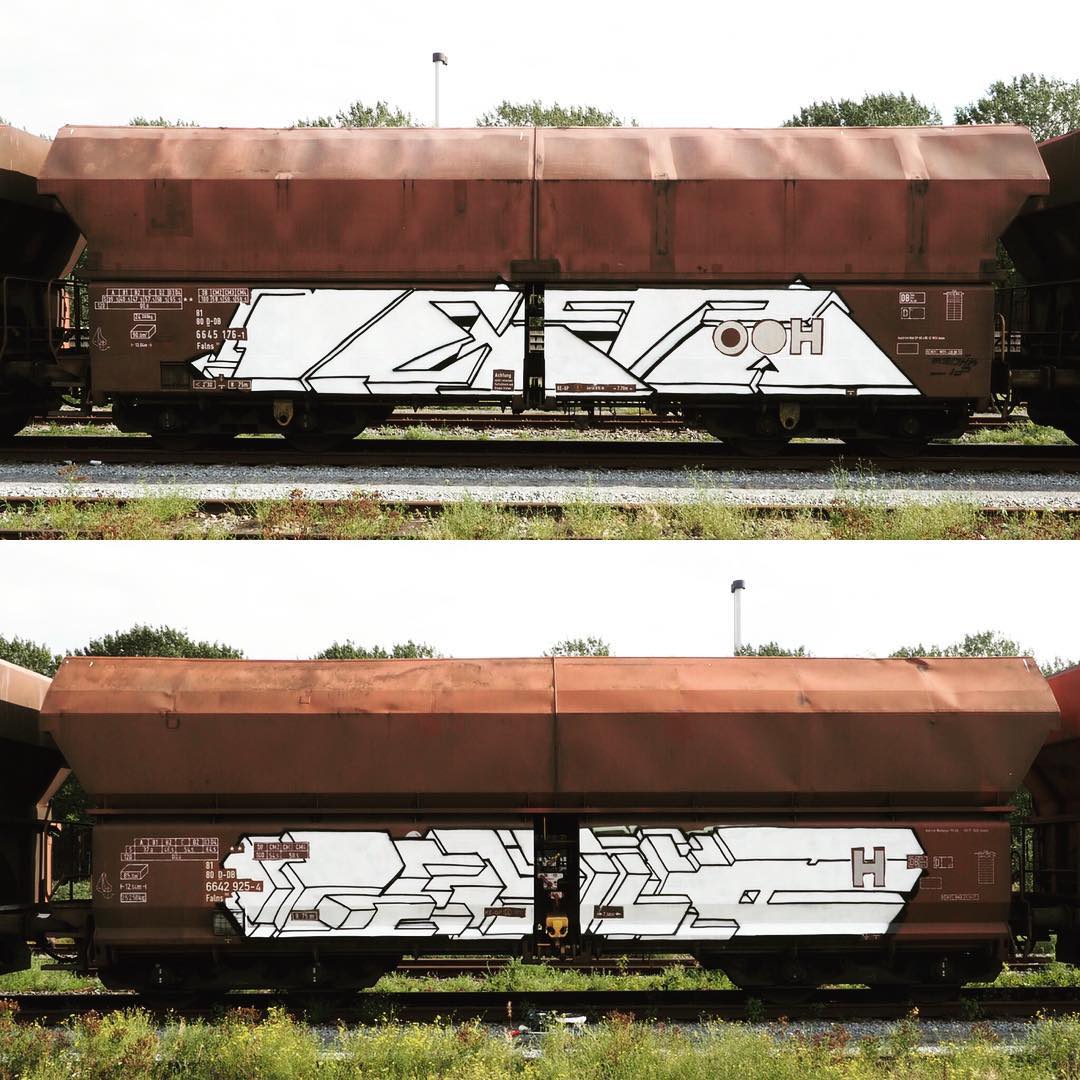
Boris Tellegen will have an exhibition at the Backslash Gallery in Paris from Nov. 7 to Dec. 20.

